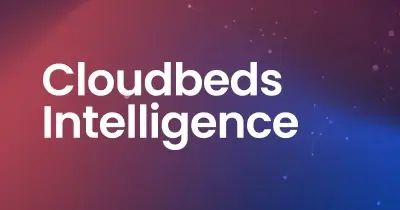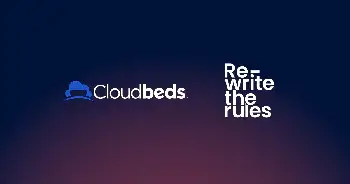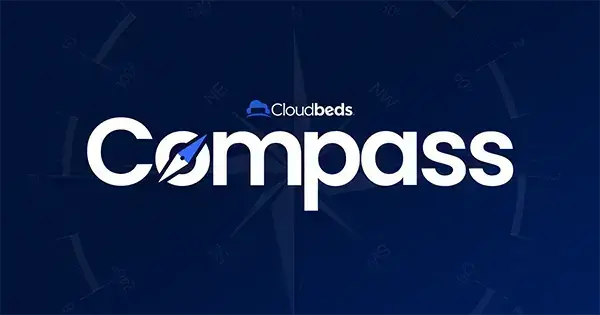
By Rafael Blanes
Pricing can be a constant source of uncertainty for hoteliers, and many find themselves asking questions like: Should I raise my room rates or lower them? What are my competitors doing? How will my pricing decisions affect bookings?
While there are no “right” answers to these questions, there are trusted pricing strategies you can use to guide you in the right direction. A great place to start is yield management.
What is hotel yield management?
Yield management is a dynamic hotel pricing strategy designed to produce the maximum revenue, or yield, from a set inventory of rooms. It’s about understanding and influencing traveler booking behavior and finding the optimal balance between occupancy and rate.
Yield management is often described as “selling the right room to the right customer (guest) at the right time for the right price.”
Yield management is based on several key assumptions:
- Hotels have a fixed number of rooms to sell.
- Inventory is perishable and time-limited, meaning if a room isn’t sold on a given night, that opportunity is gone forever.
- Different people are willing to pay different prices for the same room under varying conditions.
The history of yield management
Before reaching the hospitality industry, the concept of yield management originated in the U.S. airline industry. Following deregulation in the late 1970s, airlines took greater control over airfares and developed systems and technology to manage inventory and pricing to maximize revenue for each flight.
Robert Crandall, former chairman and CEO of American Airlines, is credited with giving yield management its name, calling it “the single most important technical development in transportation management since we entered deregulation.”
Tactics employed by the airlines included offering discounted fares for low-demand flights and increasing fares for high-demand flights, as well as implementing purchase restrictions, length-of-stay requirements, fees for changing and canceling tickets, and higher costs for premium airline seats. Other industries quickly followed suit, including rental car providers and the hotel industry, and many of these tactics are still applied today.
Yield management vs. revenue management
The main difference between yield management and revenue management is that yield management has a narrower focus and is generally regarded as maximizing a hotel’s RevPAR through pricing and inventory controls.
Revenue management is a broader term that encompasses market segmentation, demand forecasting, and more in-depth data analysis. An advanced revenue management strategy goes even further, factoring total revenue, costs, and profits into revenue decisions.
For lodging operators new to hotel revenue management or with limited time, yield management is the place to focus efforts. Once you master the basics, you can look at expanding your skillset.
3 examples of yield management in action
Yield management shapes consumer behavior everywhere. Here are a few examples:
- Dining out. Want to go out for dinner but on a tight budget? Take advantage of “early-bird specials” offered by local restaurants. These specials are designed to boost revenue by attracting different customers who are more price-sensitive outside of peak hours.
- Ordering a ride. If you use Uber, Lyft, or another ridesharing service, you may notice different prices for the same route at different times of the day. To maximize revenue (and encourage more drivers to serve the area), Uber implements “surge pricing” during times of high demand.
- Going to a show. To sell as many tickets as possible at the highest average price for every performance, theaters charge premiums for preferred seats and extend discounts for matinees, advanced purchases, and same-day tickets.
Yield management formula
Calculating yield can help guide pricing decisions. A simple yield management formula is to divide earned revenue by potential revenue and multiply by 100. For example, if a hotel has ten available rooms to sell and its maximum rate is $299, its potential revenue is $2,999. If the hotel sells nine rooms at $149, its total revenue is $1,331, and its yield is 44%.
However, if demand is strong, a better strategy might be to increase the rate to $249. Even if the hotel sells only six rooms, it will still end up further ahead, with $1,494 in revenue and a 50% yield. Not to mention the cost savings in servicing six rooms instead of nine.
What is a yield management system?
Yield management can be time-consuming and complicated, involving a lot of data, numbers, and calculations. It’s especially difficult to execute well with limited resources. For help, lodging operators turn to tools such as revenue management systems (RMS), rate shoppers, and channel managers.
One tool that is particularly popular with smaller hotels is a yield management system like Cloudbeds’ Pricing Intelligence Engine (PIE). PIE saves hotels time by using algorithms to automate tasks related to data collection, rate shopping, pricing, inventory management, and reporting.
To maximize revenue and take advantage of market demand, hotels can set rules and alerts to adjust pricing and stay restrictions in response to changes in occupancy rates, competitor activity, and market conditions. All tools and data are displayed on an easy-to-use dashboard that is integrated with your property’s PMS and other core systems.
How Picton Harbour Inn earned an additional $60K in 6 months
Now that newer, easy-to-use solutions are accessible to all types and sizes of lodging businesses, revenue management is no longer limited to large hotel businesses that have the budget to hire a dedicated revenue manager. For example, the Picton Harbour Inn, a 3-star Prince Edward hotel, moved from pen-and-paper operations to Cloudbeds to manage its 29-room, 3-suite property.
They started using PIE to gather market data, make better pricing decisions, and automate tasks to maximize yield. The results were felt immediately, with the owner estimating that the Inn made an additional 60K CAD in just six months.
“We massively impacted our bottom line by reviewing occupancy reports in the offseason. For instance, we found that changing the pricing for a certain room type resulted in tens of thousands of incremental dollars.”
9 yield management strategies for boosting revenue
To increase revenue generated at your hotel, consider implementing the following yield management techniques:
1. Let data guide your decisions.
Start by setting rates for the coming year. Look at market conditions, historical data, booking pace, and unconstrained demand – the number of rooms you could sell if you had unlimited inventory. Monitor the impact of your pricing decisions and use them to guide future strategies.
2. Practice dynamic pricing.
Static room pricing is old-school. You’ll capture more revenue by using a variable pricing strategy – or increasing rates when demand is high and lowering rates when demand is low. This includes adjusting rates by time of year (season) and day of week, during conferences and events, and in response to changes in occupancy and market conditions.
3. Implement stay restrictions.
Instead of always having higher rates on busy nights, consider implementing stay restrictions such as closed-to-arrival (CTA) or a minimum length of stay (MinLOS) to boost occupancy on shoulder nights.
4. Track competitors’ rates.
Travel shoppers check out your competitors’ rates, and so should you. Decide how to price your property relative to your top competitors or compset. Use a rate shopping tool for easy comparison and a pricing intelligence tool to ensure you’re always priced where you want to be.
5. Vary your pricing.
Charge a higher price for your in-demand rooms that offer extra space, a nice view, a balcony, or a preferred bed configuration. Offer a variety of rate plans to appeal to a range of traveler types and budgets, including non-refundable rates, packages, weekend rates, and incentives for direct bookings and longer stays.
6. Understand your market mix.
Different market segments will be willing to pay different rates at different times. For example, business travelers book well in advance and expect discounted rates, whereas OTA distribution channels can be a good source of last-minute bookings. Monitor which customer segments are booking which room types and when, and adjust rates accordingly.
7. Consider an overbooking strategy.
An overbooking strategy is when a property purposefully books its inventory beyond capacity in anticipation that a certain amount of guests will cancel or not show up. It can be a cost-effective strategy if implemented correctly but requires clear processes.
8. Offer upsells.
Upselling is the practice of offering guests additional features or add-ons to enhance their stay for an extra cost. Not only does it add to the guest experience, but it can help hotels generate more revenue.
9. Don’t let those beautiful hotel rooms sit empty.
Move your perishable inventory and give your average rate a boost by providing guests an opportunity to upgrade their room prior to arrival or at check-in with an irresistible offer.
The benefits of using a yield management system
As effective as these strategies can be, it’s virtually impossible to do them well without the help of revenue management software. Here are just a few of the advantages of investing in a yield management system:
- Uncover more opportunities to drive bookings, revenue, and profits
- Monitor competitor rates in real-time to strategically position your pricing
- Set rules and alerts to be notified of important market changes
- Use a single, integrated dashboard to access all data, metrics, and tools
- Take advantage of better reporting, analytics, and visual data
- Integrate seamlessly with your PMS, booking engine, and channel manager


















